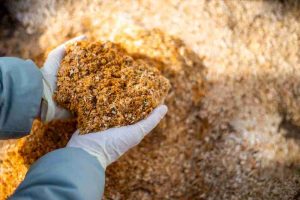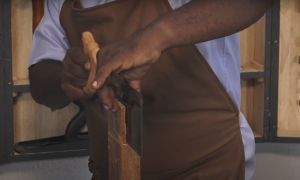When it comes to maintaining a healthy, lush lawn, the type of mower blade you choose plays a crucial role. Homeowners and landscaping professionals often debate between mulching blades and regular blades, each offering distinct advantages for different lawn care needs.
This comprehensive comparison guide will help you make an informed decision for your specific mulching blade vs regular Blade.
Understanding Lawn Mower Blades
Lawn mower blades are the workhorses of your mowing equipment, responsible for cutting grass cleanly and efficiently. The design and condition of your blade directly impact your lawn’s appearance and health.
While all blades serve the same basic purpose, their specific designs determine how grass clippings are handled and ultimately affect your lawn’s overall condition.
What Are Regular Blades?
Regular blades, also known as standard or high-lift blades, are the traditional choice for most lawn mowers. These blades feature a slight upward curve on the ends, creating an aerodynamic lift that pulls grass upright for a clean cut. After cutting, the clippings are typically discharged through a side chute or collected in a bag.
Advantages of Regular Blades
- Provide a clean, manicured look.
- Excellent for collecting clippings.
- Better for taller grass and weeds.
- Reduce clumping in wet conditions.
- Ideal for lawns that need frequent cutting.
Disadvantages of Regular Blades
- Create grass clippings that require disposal.
- May remove nutrients from the lawn.
- It can contribute to thatch buildup over time.
- It is a less environmentally friendly option.
What Are Mulching Blades?
Mulching blades feature a more complex design with additional curved surfaces and cutting edges. These blades are engineered to cut grass clippings into tiny pieces and then recirculate them within the mower deck until they’re fine enough to settle back onto the lawn as natural fertilizer.
Advantages of Mulching Blades
- Return nutrients to the soil.
- Reduce the need for chemical fertilizers.
- Improve soil moisture retention.
- Eliminate the need for bagging and disposal.
- Environmentally friendly option.
Disadvantages of Mulching Blades
- May require more frequent mowing.
- Less effective on very tall or wet grass.
- It can leave clumps if not used properly.
- May need more frequent blade sharpening.
Comparison of Mulching Blade Vs Regular Blade
Cutting Performance
Regular blades excel at creating a clean, uniform cut, especially in lawns that are mowed regularly. The high-lift design ensures grass stands tall for an even cut.
Mulching blades, while still providing a quality cut, focus more on finely shredding the clippings rather than just cutting them once.
Lawn Health Benefits
Mulching blades have a clear advantage when it comes to lawn health. The finely chopped grass clippings decompose quickly, returning valuable nitrogen and other nutrients to the soil. This natural fertilization can lead to a greener, healthier lawn over time.
Regular blades remove these nutrients from the lawn when clippings are bagged and disposed of.
Discharge vs. Mulching Capabilities
Regular blades are designed to efficiently discharge clippings out the side chute or into a collection bag.
Mulching blades keep clippings under the deck longer, cutting them repeatedly until they’re small enough to filter back into the lawn. Some modern mowers offer convertible systems that can switch between mulching and discharging functions.
Maintenance Requirements
Both blade types require regular sharpening for optimal performance, but mulching blades may need more frequent attention due to their more complex cutting action.
Regular blades are generally simpler to maintain and may last slightly longer between sharpenings.
Cost Considerations
Initial costs for both blade types are comparable, though mulching blades may be slightly more expensive due to their more complex design.
However, the long-term cost savings from reduced fertilizer needs with mulching blades can offset this initial difference.
Factors to Consider When Choosing
Lawn Size and Type
For smaller, well-maintained lawns, mulching blades often provide the best results. Larger properties or those with uneven terrain might benefit more from regular blades, especially if grass collection is preferred.
Grass Species
Certain grass types respond better to mulching. Cool-season grasses like fescue and bluegrass typically thrive with mulching blades, while some warm-season varieties may do better with regular cutting and removal of clippings.
Climate and Growing Conditions
In areas with rapid grass growth, regular blades might be more practical. During drought conditions, mulching blades can help retain soil moisture by returning organic matter to the lawn.
Mowing Frequency
If you mow regularly and remove no more than one-third of the grass blade height at a time, mulching blades work excellently. For less frequent mowing or when dealing with overgrown grass, regular blades may be more effective.
Maintenance Tips for Both Blade Types
Regardless of which blade type you choose, proper maintenance is essential:
- Sharpen blades regularly – At least twice per season or after every 10-12 hours of use
- Clean blades after each use – Remove grass buildup to prevent rust and maintain cutting efficiency
- Balance blades – Unbalanced blades can cause vibration and damage to your mower
- Replace damaged blades – Never attempt to repair severely bent or cracked blades
- Follow safety precautions – Always disconnect the spark plug before performing any blade maintenance
Conclusion
The choice between a mulching blade vs regular blade ultimately depends on your specific lawn care goals and conditions. Mulching blades offer environmental benefits and can improve lawn health by returning nutrients to the soil, while regular blades provide a clean-cut appearance and excel at collecting clippings.
For most homeowners with well-maintained lawns who mow regularly, mulching blades provide the best combination of results and benefits. However, if you frequently deal with tall grass, wet conditions, or prefer a pristine look with clippings removed, regular blades might be the better option.
Consider your lawn’s specific needs, your mowing habits, and your maintenance preferences when making your decision. Many lawn care professionals even keep both types on hand, switching between them based on seasonal conditions and lawn requirements. By selecting the right blade for your situation, you’ll ensure a healthier, more attractive lawn with less effort and expense.





